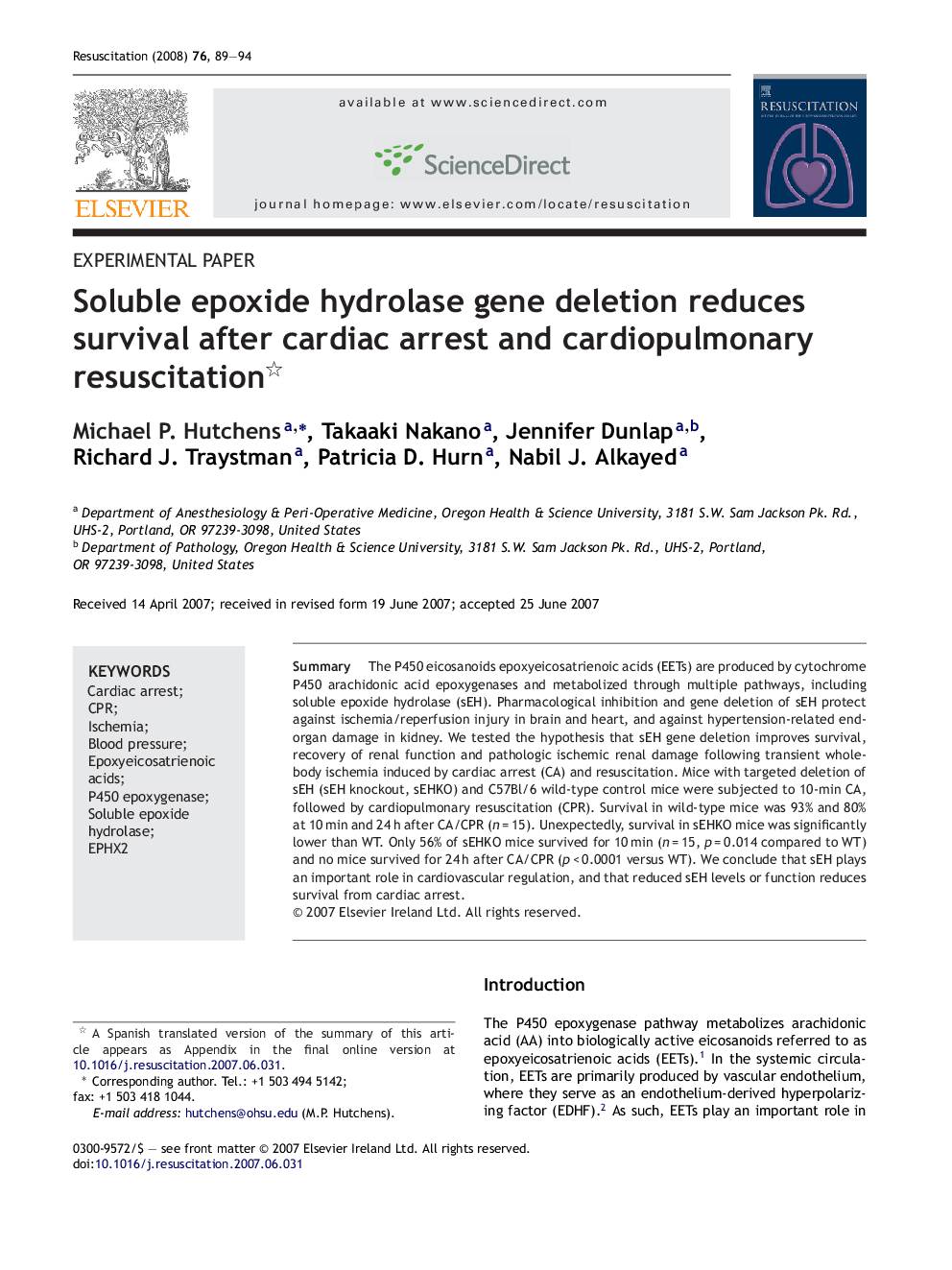| کد مقاله | کد نشریه | سال انتشار | مقاله انگلیسی | نسخه تمام متن |
|---|---|---|---|---|
| 3009856 | 1181500 | 2008 | 6 صفحه PDF | دانلود رایگان |

SummaryThe P450 eicosanoids epoxyeicosatrienoic acids (EETs) are produced by cytochrome P450 arachidonic acid epoxygenases and metabolized through multiple pathways, including soluble epoxide hydrolase (sEH). Pharmacological inhibition and gene deletion of sEH protect against ischemia/reperfusion injury in brain and heart, and against hypertension-related end-organ damage in kidney. We tested the hypothesis that sEH gene deletion improves survival, recovery of renal function and pathologic ischemic renal damage following transient whole-body ischemia induced by cardiac arrest (CA) and resuscitation. Mice with targeted deletion of sEH (sEH knockout, sEHKO) and C57Bl/6 wild-type control mice were subjected to 10-min CA, followed by cardiopulmonary resuscitation (CPR). Survival in wild-type mice was 93% and 80% at 10 min and 24 h after CA/CPR (n = 15). Unexpectedly, survival in sEHKO mice was significantly lower than WT. Only 56% of sEHKO mice survived for 10 min (n = 15, p = 0.014 compared to WT) and no mice survived for 24 h after CA/CPR (p < 0.0001 versus WT). We conclude that sEH plays an important role in cardiovascular regulation, and that reduced sEH levels or function reduces survival from cardiac arrest.
Journal: Resuscitation - Volume 76, Issue 1, January 2008, Pages 89–94